-
 Bitcoin
Bitcoin $118400
0.47% -
 Ethereum
Ethereum $3836
2.20% -
 XRP
XRP $3.157
2.98% -
 Tether USDt
Tether USDt $0.9999
-0.03% -
 BNB
BNB $801.5
1.31% -
 Solana
Solana $180.9
2.07% -
 USDC
USDC $0.9999
-0.02% -
 Dogecoin
Dogecoin $0.2225
2.50% -
 TRON
TRON $0.3285
-1.02% -
 Cardano
Cardano $0.7789
2.60% -
 Hyperliquid
Hyperliquid $43.60
2.39% -
 Sui
Sui $3.892
4.41% -
 Stellar
Stellar $0.4229
3.34% -
 Chainlink
Chainlink $18.01
3.98% -
 Hedera
Hedera $0.2745
6.77% -
 Bitcoin Cash
Bitcoin Cash $582.3
3.38% -
 Avalanche
Avalanche $23.77
1.04% -
 Ethena USDe
Ethena USDe $1.001
0.01% -
 Toncoin
Toncoin $3.493
3.59% -
 Litecoin
Litecoin $110.0
2.48% -
 UNUS SED LEO
UNUS SED LEO $8.936
-0.37% -
 Shiba Inu
Shiba Inu $0.00001304
2.49% -
 Uniswap
Uniswap $9.999
1.09% -
 Polkadot
Polkadot $3.897
3.26% -
 Monero
Monero $308.6
-0.83% -
 Dai
Dai $0.9999
-0.01% -
 Bitget Token
Bitget Token $4.504
-0.04% -
 Pepe
Pepe $0.00001154
2.95% -
 Cronos
Cronos $0.1471
3.06% -
 Ethena
Ethena $0.6691
19.53%
How to predict when +DI and -DI in DMI are entangled?
When +DI and -DI are entangled, it signals market indecision—avoid trend-based trades and wait for clear divergence or breakout confirmation.
Jul 30, 2025 at 06:56 am
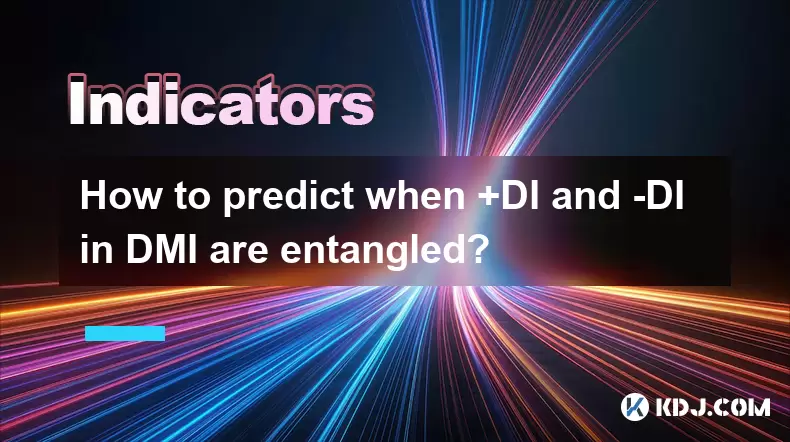
Understanding the DMI Indicator and Its Components
The Directional Movement Index (DMI) is a technical analysis tool used to identify the presence and direction of a trend in cryptocurrency price movements. It consists of three core components: +DI (Positive Directional Indicator), -DI (Negative Directional Indicator), and ADX (Average Directional Index). The focus here is on the interaction between +DI and -DI, which are derived from directional movement calculations based on price highs and lows over a specified period, typically 14 candles.
+DI measures the strength of upward price movement, while -DI reflects the strength of downward movement. When these two lines converge or cross frequently, they are said to be “entangled.” This entanglement often signals a period of low directional momentum or consolidation, where neither buyers nor sellers gain control. In the volatile cryptocurrency market, such phases are common during sideways price action or before major breakouts.
Identifying Entanglement Between +DI and -DI
Entanglement occurs when +DI and -DI move closely together, frequently crossing each other without a clear, sustained separation. This behavior suggests indecision in the market and a lack of a dominant trend. To identify entanglement:
- Monitor the proximity of the +DI and -DI lines on the DMI chart. If they remain within a narrow range (e.g., less than 2–3 points apart) for several candlesticks, entanglement is likely.
- Observe repeated crossovers—when +DI crosses above -DI and then quickly crosses back below within a few periods.
- Check for low ADX values (typically below 20), which confirm weak trend strength and support the observation of entanglement.
In cryptocurrency trading, this often happens after sharp price movements when the market pauses to re-evaluate. For example, after a strong rally in Bitcoin, both +DI and -DI may converge as profit-taking and new entries balance each other.
Factors That Lead to +DI and -DI Entanglement
Several market conditions contribute to the entanglement of +DI and -DI:
- Low volatility: When price movements are minimal, directional changes are small, causing both indicators to reflect weak signals.
- Sideways market structure: Cryptocurrencies like Ethereum or Solana often enter consolidation phases after extended trends, leading to overlapping +DI and -DI.
- Market indecision: During major news events or macroeconomic shifts, traders may hesitate, resulting in balanced buying and selling pressure.
- Short-term trading noise: High-frequency trading and algorithmic activity can create false directional signals, making the DMI lines fluctuate without meaningful trend development.
These factors cause the +DI and -DI values to oscillate around each other, making it difficult to derive reliable trading signals solely from their crossovers during these periods.
Strategies to Anticipate Entanglement in DMI
Predicting entanglement involves analyzing both the DMI and complementary indicators to detect weakening momentum before the lines become intertwined.
- Monitor ADX decline: A falling ADX line, especially from above 25 to below 20, often precedes entanglement. This indicates diminishing trend strength.
- Use price action confirmation: Look for narrowing candle ranges, such as doji patterns or small-bodied candles, which signal reduced momentum.
- Apply moving averages: When price hovers around a 50-period or 200-period moving average, it may indicate balance between bulls and bears, increasing the likelihood of DMI entanglement.
- Combine with volume analysis: Decreasing trading volume during price consolidation supports the idea that neither side is gaining control, reinforcing the potential for entangled +DI and -DI.
For instance, if Bitcoin’s price moves in a tight range between $60,000 and $61,000 for 12 hours with declining volume and ADX dropping from 28 to 18, the +DI and -DI are likely to begin entangling.
Practical Steps to Detect Impending Entanglement Using TradingView
To proactively monitor for entanglement on TradingView, follow these detailed steps:
- Open a cryptocurrency chart (e.g., BTC/USDT) and apply the DMI indicator from the "Indicators" menu.
- Set the period to 14, the default for DMI, unless custom analysis requires adjustment.
- Enable the ADX line alongside +DI and -DI to assess trend strength.
- Use the "Compare" feature to overlay volume or moving averages for confirmation.
- Create an alert for when the absolute difference between +DI and -DI falls below 3.
- Visually inspect the chart for converging lines and cross-check with price action.
Additionally, customize the DMI display by changing the line colors (e.g., green for +DI, red for -DI) to enhance visibility. Save this setup as a template for quick access in future analysis.
Using Entanglement as a Filter for Trade Entries
During periods of +DI and -DI entanglement, traditional crossover strategies become unreliable. Instead, traders can use this condition as a filter to avoid false entries.
- Avoid opening new positions based solely on +DI/-DI crossovers when entanglement is present.
- Wait for a clear divergence—when one line pulls away and sustains separation—for confirmation of a new trend.
- Combine with support and resistance levels: If entanglement occurs near a key level, it may precede a breakout.
- Use Bollinger Bands or RSI to detect overbought/oversold conditions within the consolidation zone.
For example, if +DI and -DI are entangled near a historical resistance level in Ethereum, and RSI shows overbought conditions, it may suggest an upcoming rejection rather than a bullish breakout.
Frequently Asked Questions
Q: Can +DI and -DI entanglement occur during a strong trend?
Yes, brief entanglement can happen during pullbacks or minor reversals within a strong trend. However, if the ADX remains above 25 and price quickly resumes the trend, the entanglement is temporary and not indicative of trend reversal.
Q: How long does entanglement typically last in cryptocurrency markets?
Duration varies based on the timeframe. On a 1-hour chart, entanglement may last 6–12 candles; on a daily chart, it could extend for 2–5 days. High volatility assets like meme coins may experience shorter, more frequent entanglements.
Q: Does entanglement always lead to a breakout?
No, entanglement often leads to continued consolidation. A breakout only occurs when external factors, such as news or volume spikes, disrupt the balance between buyers and sellers.
Q: Can I automate alerts for +DI and -DI convergence?
Yes, on platforms like TradingView, use the Pine Script to create a condition: abs(dip - dim) < 3, then set up a pop-up or email alert when this condition is met.
Disclaimer:info@kdj.com
The information provided is not trading advice. kdj.com does not assume any responsibility for any investments made based on the information provided in this article. Cryptocurrencies are highly volatile and it is highly recommended that you invest with caution after thorough research!
If you believe that the content used on this website infringes your copyright, please contact us immediately (info@kdj.com) and we will delete it promptly.
- Ozak AI: Can This Underdog Crypto Achieve a Bull Run to $1?
- 2025-07-31 22:30:12
- Coinbase Breach: Navigating Insider Risk and Bolstering Security
- 2025-07-31 23:11:55
- Bitcoin Rebounds, WeWake Presale Gains Traction: What's the Buzz?
- 2025-07-31 22:30:12
- Bitcoin, Altcoins, and Volume Watchlists: Decoding the Crypto Landscape
- 2025-07-31 23:11:55
- Tron, Fartcoin, and BlockchainFX: What's Trending (and What's Not) in the Crypto World
- 2025-07-31 21:32:19
- Bitcoin, Corporate Investments, and Sustainability: A New Era or Fleeting Fad?
- 2025-07-31 20:50:14
Related knowledge

How can you use the MACD histogram to determine trend strength?
Jul 31,2025 at 11:10pm
Understanding the MACD Histogram and Its ComponentsThe MACD (Moving Average Convergence Divergence) histogram is a visual representation of the differ...
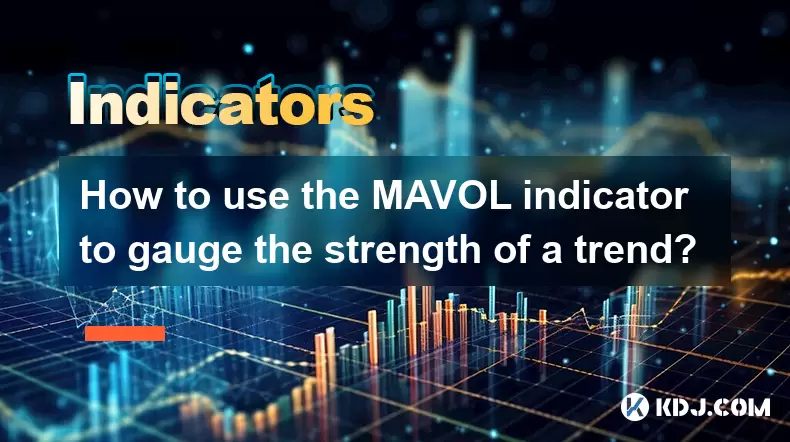
How to use the MAVOL indicator to gauge the strength of a trend?
Jul 31,2025 at 09:57pm
Understanding the MAVOL Indicator in Cryptocurrency TradingThe MAVOL indicator, short for Moving Average of Volume, is a technical analysis tool widel...
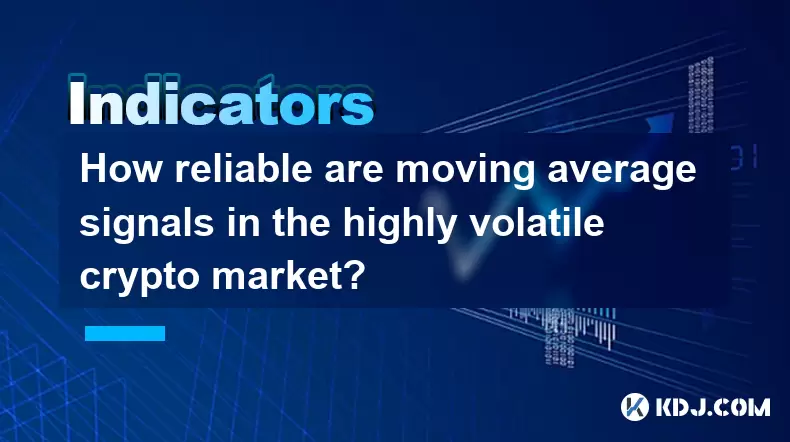
How reliable are moving average signals in the highly volatile crypto market?
Jul 31,2025 at 08:36pm
Understanding Moving Averages in Cryptocurrency TradingMoving averages (MAs) are among the most widely used technical indicators in the cryptocurrency...
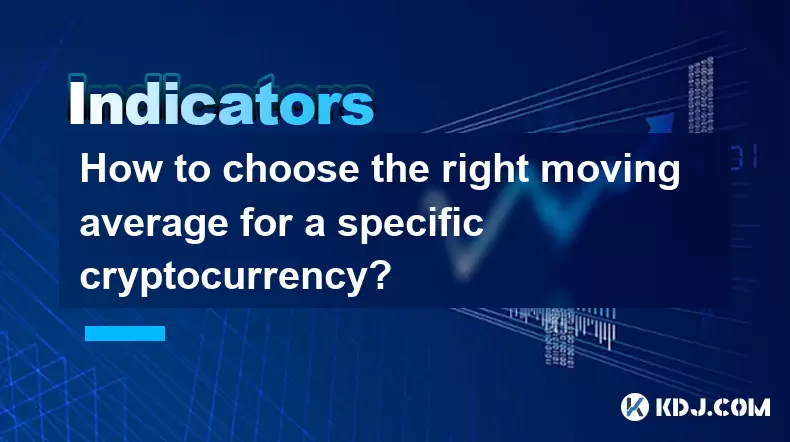
How to choose the right moving average for a specific cryptocurrency?
Jul 31,2025 at 10:29pm
Understanding the Role of Moving Averages in Cryptocurrency TradingMoving averages are foundational tools in technical analysis, widely used by crypto...
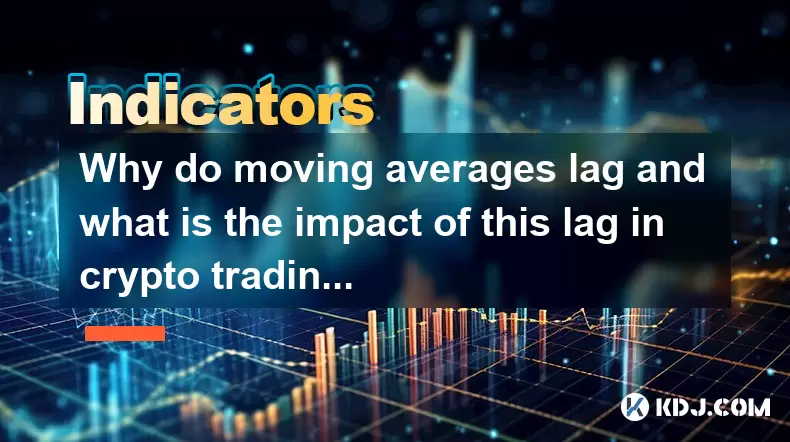
Why do moving averages lag and what is the impact of this lag in crypto trading?
Jul 31,2025 at 08:07pm
Understanding the Concept of Moving Averages in Crypto TradingMoving averages are among the most widely used technical indicators in cryptocurrency tr...
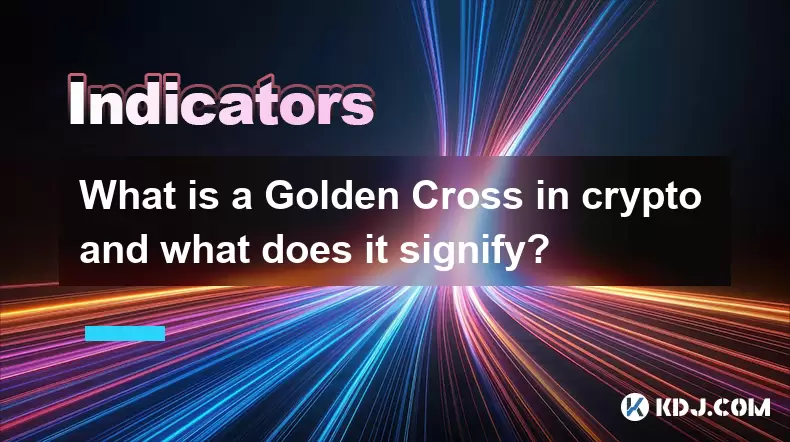
What is a Golden Cross in crypto and what does it signify?
Jul 31,2025 at 10:36pm
Understanding the Golden Cross in Cryptocurrency MarketsThe Golden Cross is a technical analysis pattern widely observed in cryptocurrency trading. It...

How can you use the MACD histogram to determine trend strength?
Jul 31,2025 at 11:10pm
Understanding the MACD Histogram and Its ComponentsThe MACD (Moving Average Convergence Divergence) histogram is a visual representation of the differ...

How to use the MAVOL indicator to gauge the strength of a trend?
Jul 31,2025 at 09:57pm
Understanding the MAVOL Indicator in Cryptocurrency TradingThe MAVOL indicator, short for Moving Average of Volume, is a technical analysis tool widel...

How reliable are moving average signals in the highly volatile crypto market?
Jul 31,2025 at 08:36pm
Understanding Moving Averages in Cryptocurrency TradingMoving averages (MAs) are among the most widely used technical indicators in the cryptocurrency...

How to choose the right moving average for a specific cryptocurrency?
Jul 31,2025 at 10:29pm
Understanding the Role of Moving Averages in Cryptocurrency TradingMoving averages are foundational tools in technical analysis, widely used by crypto...

Why do moving averages lag and what is the impact of this lag in crypto trading?
Jul 31,2025 at 08:07pm
Understanding the Concept of Moving Averages in Crypto TradingMoving averages are among the most widely used technical indicators in cryptocurrency tr...

What is a Golden Cross in crypto and what does it signify?
Jul 31,2025 at 10:36pm
Understanding the Golden Cross in Cryptocurrency MarketsThe Golden Cross is a technical analysis pattern widely observed in cryptocurrency trading. It...
See all articles

























































































